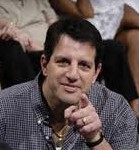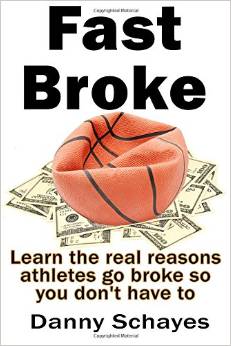 In this section I am discussing the world of entrepreneurship. People who have jobs rely heavily on structures and systems that were created by others. When we enter the world of personal success we start from scratch and need to build them ourselves. After much searching and contemplation, I finally hit upon the answer:
In this section I am discussing the world of entrepreneurship. People who have jobs rely heavily on structures and systems that were created by others. When we enter the world of personal success we start from scratch and need to build them ourselves. After much searching and contemplation, I finally hit upon the answer:
So where did the answer actually lie? What was the model I could understand clearly, implement easily and follow through to results?
I kept looking.
What about successful companies like Apple with Steve Jobs, or General Electric with Jack Welch?
These examples have been studied, analyzed, and put under the microscope. Again, these massive results are as much a product of a driving force that was unique and not easily reproducible. Steve Jobs was a one-in-a-billion visionary that changed the world. They broke the mold when they made him. Of course, that’s the problem. We need the mold.
 I finally realized that the answer wasn’t trying to copy a person or company that was once-in-a-millennium successful. No one else can really do it. After all, I didn’t pattern my game after Michael Jordan’s. Why bother? I didn’t have the skills that he had.
I finally realized that the answer wasn’t trying to copy a person or company that was once-in-a-millennium successful. No one else can really do it. After all, I didn’t pattern my game after Michael Jordan’s. Why bother? I didn’t have the skills that he had.
After much contemplation, I realized I was a master of the most proven success model ever created: how to succeed at professional sports.
Sports provide the most used, analyzed, tweaked and repeated success model in existence. It is the most applicable to people because most individuals can manage a group the size of a sports team versus one the size of Microsoft. And even if you are not a sports person, the elements are understandable. I found that it was fairly easy to break down the sports experience and compare it to an individual’s needs in life in a clear and understandable way.
Why all sports analogies are wrong: What are the real keys?
It’s hard to get very far without hearing a sports analogy about a topic. Do you want to “quarterback your team”? Do you ever “punch above your weight,” or “cross the finish line?” The last thing you want to do is “fumble on the one-yard line!”
But the reality is that in the world of investing and success, most sports analogies are dead wrong. The last thing you want to be is the quarterback of the team or think like a head coach. You don’t even want to be the general manager.
All of those positions get a lot of attention, but those jobs are where small thinking happens. Each of those positions is just one small part of a bigger machine. And worst of all, those positions are expendable with a notoriously short life span.
The quarterback is a producer for someone else. He gets beat up much of the time and if he doesn’t produce every game he gets replaced. Does that sound like a formula for success?
What about the head coach? Doesn’t he get to make the decisions during the game? Well, sort of. Actually, he is really a middle manager. He is under the general manager who picks the players and makes the trades. He works with what he has and is the first one fired when things go bad.
Ah, then you certainly want to be the general manager. He is the one who really makes the decisions, right? After all, he picks the players, hires the coach and makes the trades. In truth, he has all of the responsibility but no real authority. He gets to keep his job as long as he makes all of the right moves. If he makes one major mistake, he gets canned.
Well, who then?
When I work with players, the first thing I discuss with them is that they need to start thinking like the one person they have the least understanding of: the owner. The owner has the ultimate say in all decisions, the ultimate responsibility for the outcome, and all of the benefits when things work out well. (And yes, all of the problems when things don’t.) When a team wins the championship, the commissioner gives the trophy to the owner, not the star player, coach or general manager.
The biggest shift any one has to make is that he is the owner of his life. He is responsible for his outcome. He hires his GM (his business advisor). He is responsible for picking his strategists (coaches), producers (players) and the rest of his team. He oversees the action, grades the performance and sets up his accountabilities.
The bottom line is that whatever happens, good or bad, is his outcome. There is no one to blame. The biggest shift most people have to make is to take ownership of their lives. The vast majority of people typically waive responsibility for their lives and give it to someone else. It might be their company, the government or their stockbroker.
If there is one universal lesson in sports, it is that we are each responsible for our own results. This is clearly obvious for individual athletes. There is nowhere to hide for a golfer or tennis player. But even team athletes know they have individual responsibility that is part of the team’s success.
Purchase a copy of Fast Broke from Amazon.com for $14.95.
Danny Schayes is a Director of Business Optimization at Intensity and a leader in the business of professional sports. Schayes frequently advises sports organizations in complex business matters that include contract negotiations, pricing strategy, marketing optimization, and executive leadership. Follow him on Twitter.
VIDEO: DANNY SCHAYES ON FAST BROKE
EXCERPT I: WHY PLAYERS GO BROKE
EXCERPT II: SMART MONEY VS. DUMB MONEY
EXCERPT III: WHY ATHLETES AND REGULAR PEOPLE DON’T GET IT
EXCERPT IV: HOW TO GO BROKE ON $100 MILLION
EXCERPT V: DON’T DROWN IN THE BATHTUB
MORE COLUMNS FROM DANNY SCHAYES:
FORGET MVP: THESE AWARDS ARE BETTER
WATCHING FRANK KAMINSKY WAS LIKE LOOKING IN THE MIRROR
HOW DANNY SCHAYES RUINED PATRICK EWING POSTER NIGHT
NO SMOOTHING MEANS $90 MILLION SALARY CAP, FISCAL INSANITY
DIVORCE COURT FOR COACHES AND PLAYERS: A MAGIC JOHNSON COACHING TALE
NBA’S PIONEERS DWINDLING FOLLOWING DEATH OF EARL LLOYD